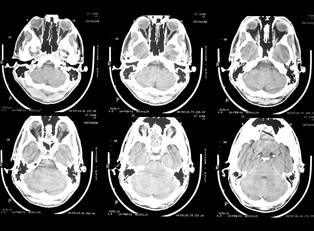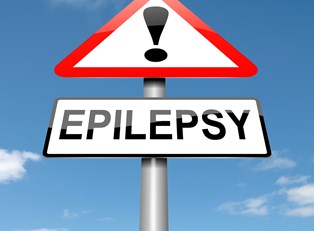Epilepsy, also called a seizure disorder, is a neurological condition caused by recurring disruptions of electrical communication in the brain. These disruptions are called seizures. Not everyone who has a seizure has epilepsy, but according to the Epilepsy Foundation, one in twenty-six people in the U.S. will develop epilepsy at some time in his or her life, usually during childhood or beyond age 55.
A diagnosis of epilepsy will result after two or more unprovoked seizures have occurred more than 24 hours apart. A seizure is considered unprovoked if there is no underlying condition or trigger that may have caused it such as a stroke, an infection, or a head injury.
Symptoms
Seizures cause a variety of symptoms ranging from a blank stare to sudden uncontrollable movements that are often accompanied by a loss of or altered state of consciousness. Most seizures last for just two minutes or less, and each type has its own predictable way of affecting people. For example, atonic seizures will usually cause a person to suddenly collapse or fall to the ground.
Partial seizures stem from a localized area of the brain. These seizures may cause symptoms, such as a change in emotions or a changed sense of smell, feel, taste, or sound. Some people lose consciousness; others will engage in repeated gestures. Some may experience tingling limbs, dizziness, or see flashing lights.
Generalized seizures affect the whole brain and are most commonly associated with convulsions or jerking and stiffening of muscles. Other symptoms include: loss of consciousness, rhythmic jerking, or falling. With some types, loss of bladder control and tongue biting are also possible symptoms. Generalized seizures affect the head, back, arms, and legs.
Causes
A major factor contributing to childhood epilepsy is poor prenatal care, which can result in brain abnormalities. Autism is also a contributing factor. Stroke, infection, and degenerative diseases like Alzheimer’s can provoke epilepsy in the elderly. Head injuries are also a major cause of epilepsy.
In a person already diagnosed with epilepsy, increases in seizure activity have been associated with sleep deprivation, overexertion, and times when sex hormones spike, as in menstruation.
Treatment
The goal of drug therapy is seizure control through antiepileptic drugs (AEDs). Although seven in ten cases are successfully controlled, according to the Epilepsy Foundation, those showing a history of failed drug therapy may be candidates for surgery in which the abnormal area is removed. Another option is the implantation of a vagus nerve stimulator (VNS) device, which sends impulses to the brain. In children, the ketogenic diet (high in fat, low in carbohydrates) has shown to help with seizure control.
Prevention
Avoiding abnormal brain development by getting solid prenatal care during pregnancy is a significant prevention measure. Children are prime candidates for head injuries, so protect your children by using car seats, seat belts, and bicycle helmets is a must. According to New York University’s Comprehensive Epilepsy Center, approximately one third of people older than 65 will fall at least once each year. If your parents live alone, you will want to provide a safe environment that will minimize falls and head injuries.
If you already have been diagnosed with epilepsy, you can prevent seizures by taking your medication regularly and by getting adequate sleep at regular intervals. Avoid excessive alcohol consumption or any substance that may impair your ability to take your medication on time. Women may consult with their neurologists about increasing their dosage just before at-risk times, such as menstruation.



